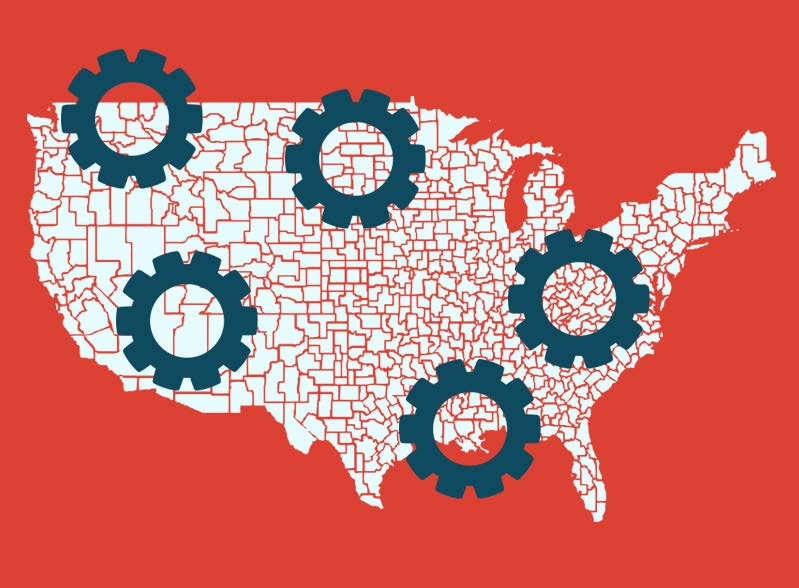Policies for Place emphasizes the need to target policies at communities with low employment rates to reduce gaps in economic opportunity while improving the return on public investment.
Economic Distress Webmap and Database
Compare employment opportunities across different communities and geographies.
VIEW MORETop Five Must-Reads

Should Place-Based Jobs Policies Be Used to Help Distressed Communities?
Yes, but only if these policies are well targeted and designed.

Job Creation Policies Can Raise Local Employment Rates, Especially for Distressed Communities
Local employment rates increase threefold when jobs are targeted toward local labor markets that were initially more distressed.

The Illustrated Case for Targeting Local Job Creation on Distressed Labor Markets
Why prioritizing distressed labor markets for programs that create jobs is even more important than we previously thought.

How State Governments Can Help Distressed Places
If states are committed to helping all residents secure and maintain good jobs, focusing on distressed areas is a key strategy to achieve that goal.

Early data shows positive job growth in distressed US counties as new federal policies take effect.
